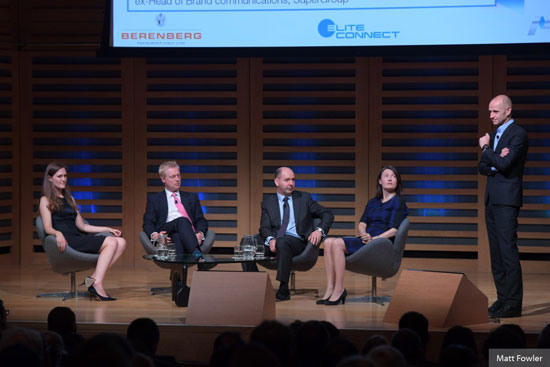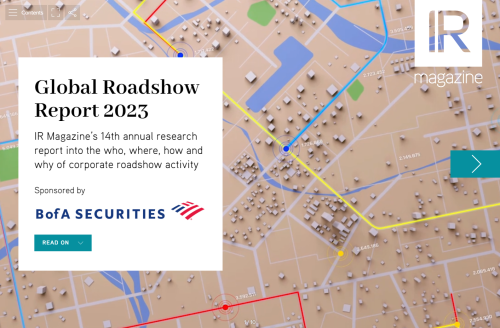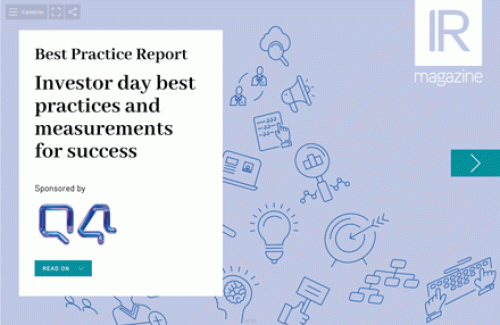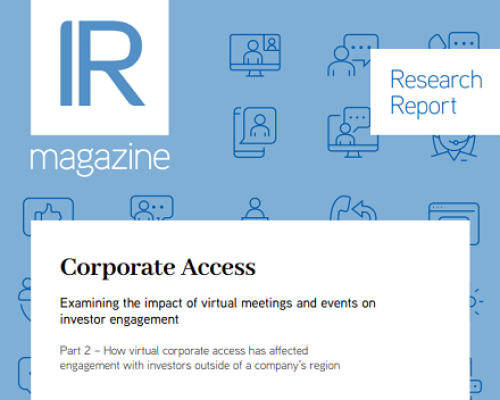The UK association’s annual conference, now in its 30th year, focused on access, boards and careers
The UK’s IR Society gathered in London for its annual conference just two days before the UK referendum on European Union membership. Had the campaign thrown up any lessons for IROs? Evan Davis, the conference moderator and BBC presenter, thought so: both sides have oversold their case, he said, eroding the trust of the people they sought to win over.
Sue Scholes, whose tenure as IR Society chair ended shortly after the conference, opened proceedings. Highlighting the event’s 30th anniversary, she discussed how much the IR industry has evolved over that time. ‘Some like me accidentally ended up in investor relations,’ she said, but today the appeal of the profession is plain for all to see.

From left to right: Mav Wynn, former head of brand communications, SuperGroup; Rupert Taylor Rea, IR director, RSA Insurance; Phil Cowdy, head of corporate affairs and strategic planning & IT, Smith & Nephew; Amanda Mellor, group secretary and head of corporate governance, M&S; Evan Davis (moderator)
Sticking with the theme of professional development, Scholes revealed that the IR Society is working on a new IR diploma, a ‘senior-level qualification’ that will complement the society’s existing IR certification. This is another important step in the growth of the profession, said Scholes, who encouraged the audience to sign up as pilots for the new course.
John Kay, the renowned economist who led a major review into the UK’s equity markets following the financial crisis, gave the opening keynote speech, in which he made a series of provocative comments on the changing nature of how businesses grow and raise capital. Kay, who leant on the findings of his 2012 review for many points, said IPOs are no longer viewed as the normal route for growth as companies need less capital today. We need to ask ourselves whether the era of public companies is coming to an end, he said.
The following session ‒ Access, board, careers: An ABC of IR ‒ tackled the main theme of the conference. The panel included IROs and former IROs who had expanded their roles or moved on to new areas. Phil Cowdy, head of corporate affairs and strategic planning & IT at Smith & Nephew, encouraged the audience to be brave when seeking a bigger remit. During your half-year assessment, put your hand up and ask for new responsibilities, he said.
Later in the day, John Dawson, head of IR at Rolls-Royce, walked the audience through an activist case study involving his own firm. The aerospace business was approached by US investor ValueAct last year, kicking off a process that led to the activist taking a board seat in February. Dawson was joined on stage by three consultants, who offered advice along the way. Don’t get into a confrontation if at all possible, said one adviser: contain the situation, learn what you can about the activist’s intentions and set out a framework for private engagement.
During the process, the number of hedge funds in the stock ‘went ballistic,’ said Dawson. Most of them wanted meetings with the company and the IR team had to do a lot of work to decide which were influential, which it needed to talk to, and which it could ignore. ‘Get advice on that,’ Dawson recommended.
Other sessions focused on leadership skills, IR as viewed from the C-suite and buy-side insight with speakers from Fidelity, Lazard and Pelham Capital. An interview with Sebastian James, CEO of FTSE 100-listed Dixons Carphone, ended the day’s talks.
At the evening reception, the IR Society unveiled the recipients of its 2016 Fellowship awards, which recognize individuals who have made a ‘significant contribution to the industry’. Fellowships this year went to former society chair Dawson and IR Magazine’s very own Janet Dignan, who founded this title in 1988.










